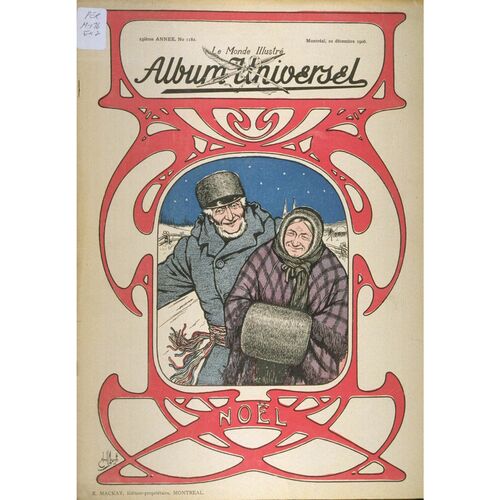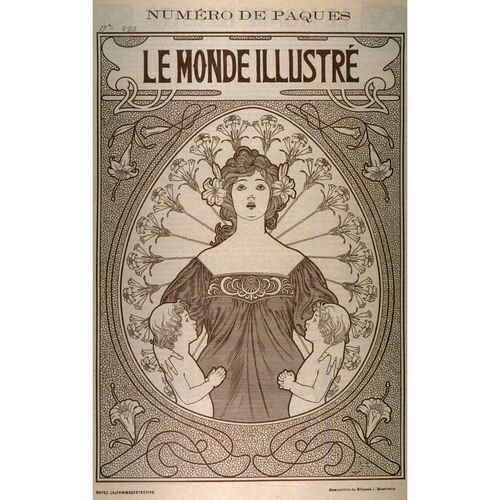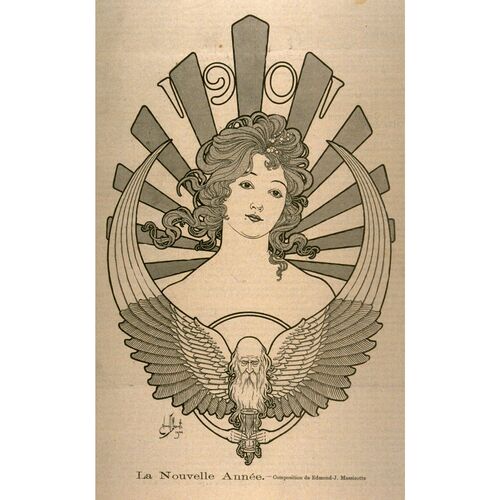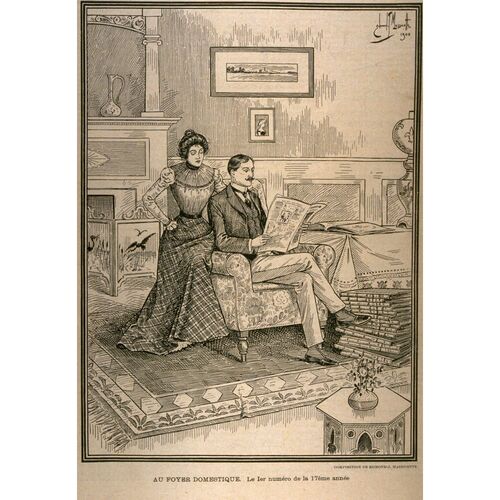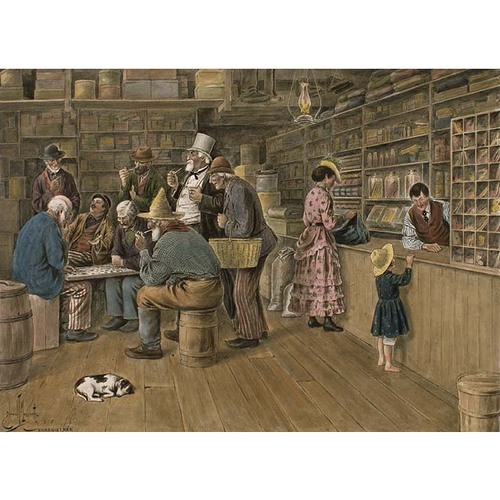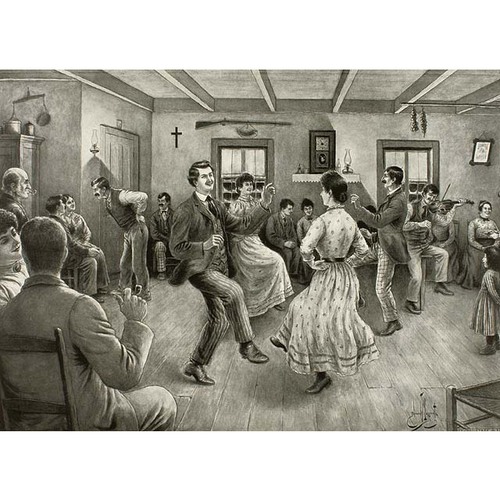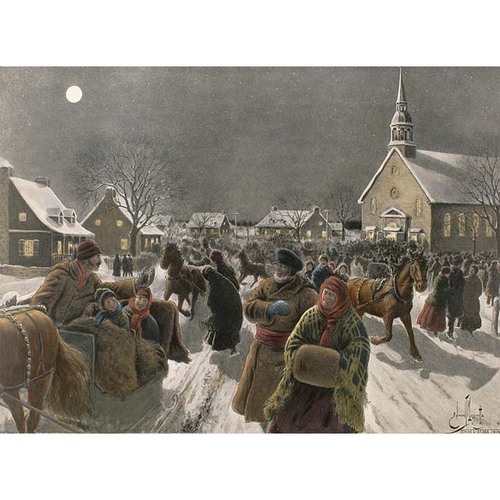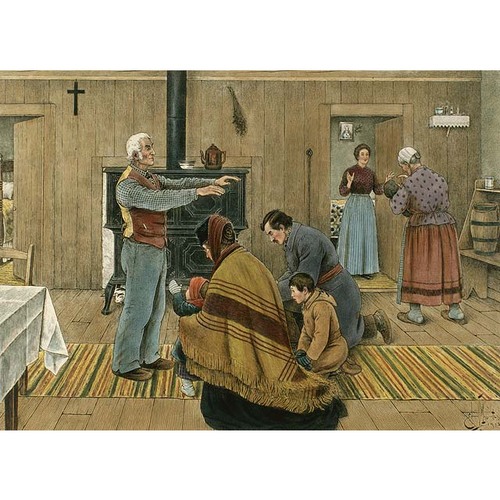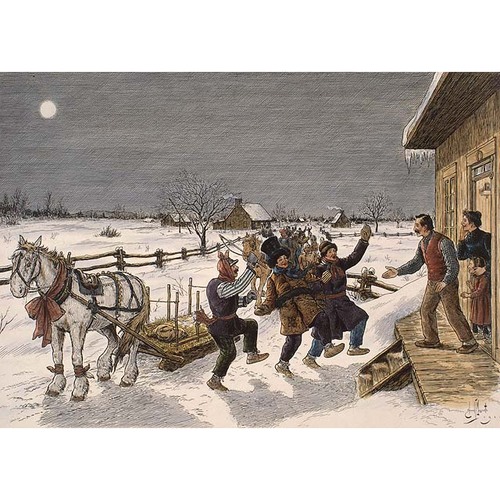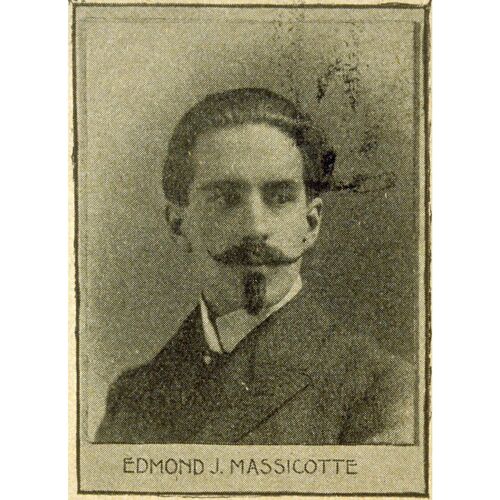MASSICOTTE, EDMOND-JOSEPH (baptized Joseph-Edmond), artist and illustrator; b. 1 Dec. 1875 in Sainte-Cunégonde (Montreal), son of Édouard Massicotte, a shoemaker, and Adèle Bertrand; m. 3 Feb. 1914 Aldine Émond in Montreal, and they had one daughter; d. there 1 March 1929.
Edmond-Joseph Massicotte took commercial courses and had his first lessons in drawing and painting with the Brothers of the Christian Schools in Sainte-Cunégonde. He then studied with Edmond Dyonnet at the Council of Arts and Manufactures of the Province of Quebec in Montreal from 1892 to about 1895, and finally with William Brymner at the school run by the Art Association of Montreal. On 15 Oct. 1892 the Montreal magazine Le Monde illustré published his first illustration, which accompanied a poem entitled “Le glaneur” that had been written by his brother, Édouard-Zotique*. Thus began, on the theme of the land, the close collaboration between the Massicotte brothers. Before confining himself to the role of portraying habitants, however, Edmond-Joseph would become the spearhead of a particular kind of modernism.
The international style known as art nouveau, in which sinuous lines convey the sensuous charms of human figures, would strongly influence Edmond-Joseph’s early work. His rapid conversion was probably due to Édouard-Zotique, who was then described as a “young barbarian” because of his attachment to the European symbolist movement. The decorated title and allegorical figure the illustrator drew around 1895 for the cover of L’Écho des jeunes, a magazine launched in Sainte-Cunégonde in 1891 (to which Édouard-Zotique contributed), seemed the emblem of the direction that the visual arts would take, alongside the new Quebec literature, with its “decadent” inspiration. Although Édouard-Zotique’s literary revolt was of short duration, Edmond-Joseph would spend another dozen years in mastering a modernism that would be useful in his work as an illustrator.
Massicotte was probably the only graphic artist in the province of Quebec to espouse the art nouveau movement at the time when it was flourishing in Europe. A number of followers subsequently appeared, including his fellow students in Sainte-Cunégonde, Henri Fabien and Georges Latour, his colleagues Raoul Barré and Albert-Samuel Brodeur at Le Passe-Temps (Montreal), Paul Caron, with whom he worked at Le Monde illustré, and even, for a short time, the traditionalist Henri Julien*.
The success of art nouveau in Montreal was the more remarkable given that Massicotte’s eye and hand provided only sporadic support to the cause. His main ambition lay elsewhere. On 3 March 1900 he made a point of listing in Le Passe-Temps the illustrators whom he admired: first, the Americans Charles Dana Gibson, a prolific artist, and Charles Stanley Reinhart; among the French, Gustave-Henri Marchetti and Jean-André Castaigne as well as Alfons Mucha (a Czech by birth); and lastly his compatriot Julien.
Except for Mucha, the illustrators Massicotte so admired were not part of the art nouveau movement, but rather fashionable graphic artists of their times. They were witty and even daring, and their concept of style had more to do with their subject than with the actual drawing. What they all had in common was technical virtuosity, and their favourite milieu was high society. Massicotte’s pencil was guided as well by the pursuit of virtuosity and social elegance. The bourgeois types he sketched – mostly friends or family members – were reminiscent of Gibson’s. These elegant figures, hundreds of whom can be found in the artist’s sketch books, were often used in designing advertisements. Nevertheless, a set of working-class and rural themes also evolved in his portfolio. Before adopting Julien’s traditionalist realism, then, Massicotte was torn between Mucha’s austerity and symmetry and Gibson’s modern elegance.
Massicotte was prolific. By the beginning of the 20th century, some 1,000 of his designs and compositions graced publications in Montreal. In addition to illustrating newspapers, literary works, and promotional materials, he did amusing drawings, especially for Le Canard, a humorous Montreal newspaper, from 1896 to 1898. During his ten years at Le Monde illustré, from 1892 to 1902, he published 237 drawings, including several caricatures. The spectacular title pages Massicotte created for it from the fall of 1900 to Easter 1901 – at least three of which were directly inspired by Mucha – seemed to proclaim that the magazine (under the editorship of Édouard-Zotique) had adopted the modernism of the new century. This series marked the high point of the art nouveau style in the artist’s work, but it was also the catalyst of the movement – which he himself would soon abandon – in illustrated publications in Quebec. To judge from his less daring use of art nouveau, his voluptuous human forms probably offended public sensibilities. From 1895 to 1910 Massicotte contributed occasionally to Le Passe-Temps, producing portraits, illustrations, and impressions of theatrical performances, sketched on the spot and referred to as “illustrated theatre.” He abandoned the latter in 1902, just as he was beginning a series of “Canadian types” in Le Passe-Temps.
By that year Massicotte’s venture into utterly pure art nouveau had come to an end. He would henceforth strive for synthesis, a desire to reconcile the new and the old which would remain with him until 1908. Some of the drawings he did for the Montreal magazine L’Album universel (the name adopted by Le Monde illustré in 1902), where he worked until 1910, reveal an attempt to combine modernist style and traditional design. One example is the cover page of the 18 April 1903 issue of Les Sucres, a composition marked by a strong graphic statement whose flattened perspective is similar to the American poster style.
In 1909 Massicotte succeeded Julien, who had died the previous year, at the Montreal publication Almanach du peuple, for which he would draw more than 150 illustrations by 1929. This event marked a significant turn in his career as an illustrator; he now became the leading interpreter of traditional Quebec life. His brother clearly played a major role in this phase too, since the search for cultural authenticity in his works relied on the research done by Édouard-Zotique, who was a historian and folklorist.
Massicotte’s fame rests primarily on the 12 plates he published in Montreal in 1923 under the title Nos Canadiens d’autrefois. Most of them had already appeared in the Almanach du peuple, and they were now supplemented by commentaries from such prominent writers as Albert Ferland*, Lionel Groulx*, and Marius Barbeau*. Five others, intended for a second volume that had not been completed at the time of Massicotte’s death, were added to them. The title of any one of them suffices to evoke a familiar picture, for example La bénédiction du jour de l’An and Le retour de la messe de minuit. Massicotte achieved the elegant simplicity of these plates by purging his artistic vocabulary of modernistic fantasy. He was indebted to modernism, however, for their incisive graphic expression, which brought about such a fine marriage of line and motif.
Edmond-Joseph Massicotte died at the age of 53 following an attack of paralysis. Since the taste for traditional rural imagery was already fading at the time, he probably had no inkling of how durable his contribution would be. Having left no paintings to speak of, Massicotte has not yet taken his rightful place in art history.
An inventory of Edmond-Joseph Massicotte’s promotional illustrations has yet to be compiled. It is known, for instance, that between 1906 and 1908 he prepared numerous advertisements for the Merchants Awning Company Limited.
Massicotte illustrated several books apart from his brother Édouard-Zotique's La cité de Sainte-Cunégonde de Montréal: notes et souvenirs (Montréal, 1893). The first was Wenceslas-Eugène Dick's Un drame au Labrador (Montréal, [1897?]), where his style is reminiscent of late European realism. In 1899 in Montréal, Édouard-Zotique's Monographies de plantes canadiennes, suivies de croquis champêtres et d'un calendrier de la flore de la province de Québec was published, illustrated by Edmond-Joseph with quasi-scientific precision in mind. In the same vein were Massicotte's drawings for his brother's book Cent fleurs de mon herbier: études sur le monde végétal à la portée de tous, suivies d'un calendrier de la flore de la province de Québec (Montréal, 1906); here he republished the illustrations that had originally appeared in the series Nos fleurs canadiennes in Le Monde illustré (Montréal) between 30 July 1893 and 22 June 1901. In addition, he prepared four drawings for Pamphile Le May*'s Contes vrais (2e éd., Montréal, 1907), drew 16 pen portraits for his brother's book Conteurs canadiens-français du XIXe siècle (Montréal, 1902), provided for publication a set of illustrations for a novel by Laure Conan [Félicité Angers], À l'œuvre et à l'épreuve (3e éd., Montréal, 1914), created 22 illustrations for Auguste Tressol, named Brother Théodule, Mes premières leçons de rédaction (Montréal, 1914), and illustrated Récits laurentiens (Montréal, 1919) and Croquis laurentiens (Montréal, 1920) by Brother Marie-Victorin [Conrad Kirouac*] and Constant Doyon's Au régime de l'eau (Québec, 1919).
Massicotte also contributed to the Almanach Rolland agricole, commercial et des familles de la compagnie J.-B. Rolland & fils (Montréal), 1915–28, the Almanach de l’Action sociale catholique (Québec), 1918–24, and the Annuaire Granger pour la jeunesse (Montréal), 1926–29.
The publication of Bernard Genest’s study Massicotte et son temps (Montréal, 1979) attests to renewed interest in the traditional aspect of Massicotte’s work, and the awareness of his contribution to modernism is evidenced in Pierre Landry, “L’apport de l’Art nouveau aux arts graphiques, au Québec, de 1898 à 1910” (thèse de ma, univ. Laval, Québec, 1983).
Massicotte’s works are available in the LAC’s Documentary Art and Photography Div., 03391 and 120-080260-8 (the latter’s inventory includes 300 items); the Musée Louis-Hémon (Péribonka, Qué.), which holds around 50 of his drawings (primarily buildings, historical figures, and anatomical studies); the Musée de la Ville de Lachine, Qué., which has 5 drawings; and the Musée National des Beaux-Arts du Québec, where the E.-J. Massicotte file conserves his 17 notebooks (dated for the most part between 1897 and 1918), containing 1,655 drawings, and 27 prints. Several other institutions hold collections of Massicotte’s engravings and illustrations, among them the Musée Pierre-Boucher (Trois-Rivières, Qué.), the Musée d’Art de Joliette, Qué. (one drawing and several prints), and the McCord Museum of Canadian Hist. in Montreal (one drawing and several prints).
ANQ-M, CE601-S19, 2 déc. 1875. BCM-G, RBMS, Saint-Pierre-Apôtre (Montréal), 3 févr. 1914. Le Devoir, 2, 4 mars 1929.
Cite This Article
David Karel, “MASSICOTTE, EDMOND-JOSEPH (baptized Joseph-Edmond),” in Dictionary of Canadian Biography, vol. 15, University of Toronto/Université Laval, 2003–, accessed January 19, 2026, https://www.biographi.ca/en/bio/massicotte_edmond_joseph_15E.html.
The citation above shows the format for footnotes and endnotes according to the Chicago manual of style (16th edition). Information to be used in other citation formats:
| Permalink: | https://www.biographi.ca/en/bio/massicotte_edmond_joseph_15E.html |
| Author of Article: | David Karel |
| Title of Article: | MASSICOTTE, EDMOND-JOSEPH (baptized Joseph-Edmond) |
| Publication Name: | Dictionary of Canadian Biography, vol. 15 |
| Publisher: | University of Toronto/Université Laval |
| Year of publication: | 2005 |
| Year of revision: | 2005 |
| Access Date: | January 19, 2026 |


![Edmond J. Massicotte [image fixe] Original title: Edmond J. Massicotte [image fixe]](/bioimages/w600.7374.jpg)
